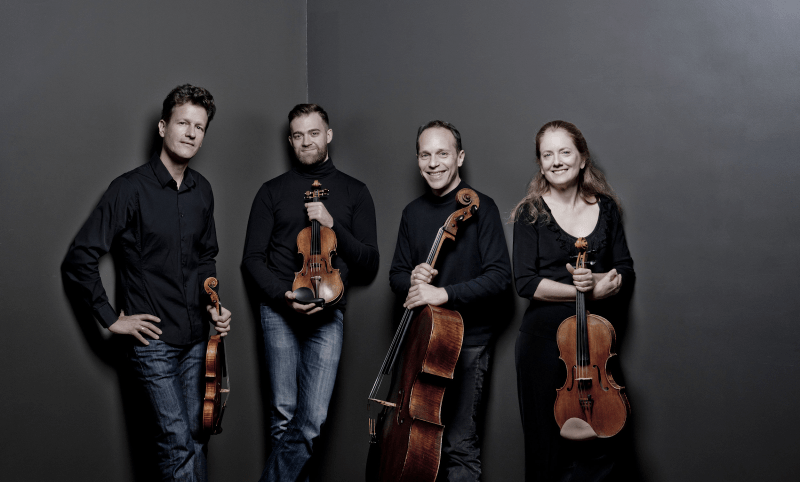The first release of Stanford Live’s online programming this fall is “St. Lawrence String Quartet: Return to Haydn,” the long-awaited homecoming of Stanford’s chamber music ensemble-in-residence. This documentary features the quartet performing Haydn in an empty Bing Concert Hall, where Stanford Live usually holds its concert season. Additional commentary from the quartet highlights their rehearsal and performance experience after a five-month hiatus.
The documentary explores the return not just to Haydn, the St. Lawrence String Quartet’s (SLSQ) favorite and signature composer, but to music-making in a pandemic. Stanford Live, which usually features in-person arts events across campus, is moving to an online format this year. Chris Lorway, executive director of Stanford Live, explained in the documentary, “We’ve put together a wonderful team of artists, filmmakers, and others to compile a virtual season… representing the best of the Bay.”
All currently enrolled Stanford students can access all Stanford Live films this season for free and community members can receive complimentary access at the $100 member donation level. “Return to Haydn” is available through November 2020.
“Return to Haydn” is more than just a performance. The documentary, directed and produced by Jamie Meltzer, is as much cinema as it is music. Notable is the gradual transition in the full performance from a traditional wide three-camera setup to shots with motion and close-ups. Director of Photography Frazer Bradshaw delivers a visually compelling film that enhances viewers’ appreciation for the Quartet’s performance: Just as the quartet settles into their groove, so does the cinematography.
Though the film captures moments of genuine fun from SLSQ’s rehearsal process, returning to live music wasn’t without its setbacks. The quartet explained that after such a long break, regaining the intimacy of playing chamber music proved challenging. Second violinist Owen Dalby recalls “going note by note by note and rebuild[ing] our group’s sense of intonation.”
Some safety precautions provided substantial roadblocks. Violist Lesley Robertson had to quickly adapt to playing with masks on: “There are lots of things you get used to. One is not being able to see people’s facial expressions.” Cellist Chris Costanza added, “Staying a little farther apart does really make a difference. You have to listen a little differently.” First violinist Geoff Nuttall’s first words in the film sum it up: “You can’t replace what we lost; it’s just not possible.”
For the film, the quartet performs the entirety of Haydn’s string quartet Op. 76, No. 5, nicknamed “Friedhofsquartett,” or “Graveyard Quartet.” After a listen, this moniker seems misleading. All of the movements sound festive, even raucous at times, not to mention the fact that three of them are, unusually, in the same bright key of D major. The second movement (“Largo, cantabile e mesto”), however, stands out. In the seemingly unrelated key of F# major, this slow movement has a deep and strange gravity. Though its melody and harmony are unmistakably somber, the movement has a comforting warmth in its sound. This combination of emotions is likely the reason the movement is performed frequently at memorial services, earning the piece its nickname. Nuttall commented, “You’ve gotta be on the verge of emotionally breaking down. You wanna give the impression that at those moments that you’re really living that.”
SLSQ brings this late work of Haydn to life in the film, and they’ve made a good choice. Although the gradual return to school and playing together in-person is cause for celebration, the troubling state of the world outside the Stanford bubble persists. The music reflects this: Though the “Graveyard Quartet” sounds joyful at first, sadder tones lie underneath the surface. But the piece ends triumphantly and SLSQ’s performance reminds us that there is still reason for levity and for happiness. After a long wait, it’s good to see the quartet diving right back into their niche and hitting all the right notes.
Contact Peyton M. Lee at peytonl7 ‘at’ stanford.edu.
